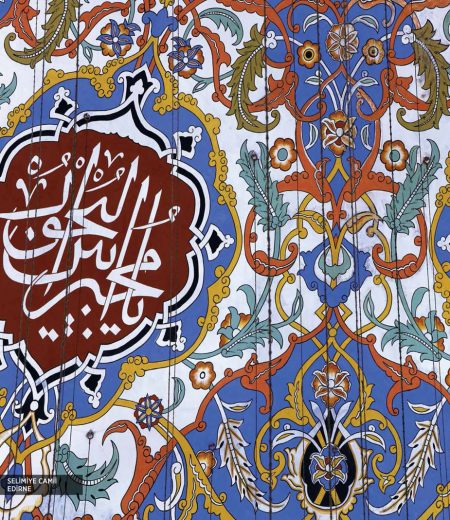The origins of the Turkish art of engraving are based on Uighur Turks in Central Asia. Painting has been performed in Seljuk, Early Ottoman, Classical Ottoman, Eclectic (Baroque, Rococo, Imperial), Neoclassical styles; it is especially applied on surfaces such as domes, ceilings, walls, arches, and vaults. Today, the engraving art is carried out by needle punching the patterns drawn using a pencil on a semi-permeable papers, transferring it onto the surface to be applied by buffering it with charcoal powder obtained from the willow tree and then painting it using various brushes. The artists performing engraving are called “Kalemkar” (engraver) or “Nakkash”. Engraving art is a set of rules and it forms the basis of our classical arts. For this reason, the art has been performed with the name of “Nakkashane” under the auspices of the Ottoman palace for many years. Engraving decorations have always been intertwined with the Turkish architectural program and have been applied on stone, marble, tile, wood (Lacquer, Edirnekari), cloth, leather, and plaster (Malakari). In the Ottoman chronicles and Usul-i Mi’mari-i Osmani, the source of the motifs, which are the main materials of the art of engraving, are described as the traces of plants (fossils) left on the rocks before the Noah’s Flood. These traces have evolved into various forms in the hands of talented artists and reached today by enriching. Hatayi (peony flower), penc (bird’s-eye view of any flower), rosebud, leaf, cloud (stylization of clouds in nature), Rumi (stylization of animal forms by Turks in Central Asia; there are varieties such as Sade Rumi, Dendanlı Rumi, Islemeli Rumi, Sencide Rumi, Picide Rumi, Hurde Rumi, Ayırma Rumi, Ortabag Rumi), munhani (combined clusters), zencerek (the crossing of the geometric lines, such as the continuation of the chainrings, from bottom and top like a mat stitching); cintemani (an element of ornament consisting of three round, two at the bottom and one at the top, and two wavy lines) and naturalist flowers have turned into art for centuries in the hands of master craftsmen. As mentioned earlier, since Ömer Faruk Çalışkan, the founder of Teknom Yapı, is a Nakkash, and the company has the greatest Decoration Archive and Inventory in Turkey, the performance of engraving in the places of worship built by Teknom Yapı is more special. The basic principle of Teknom Yapı is to prepare the ornamental program in accordance with the architect’s frame of mind, architectural order, and the entire geometric structure of the building during the planning stage of the place of worship to be built.

